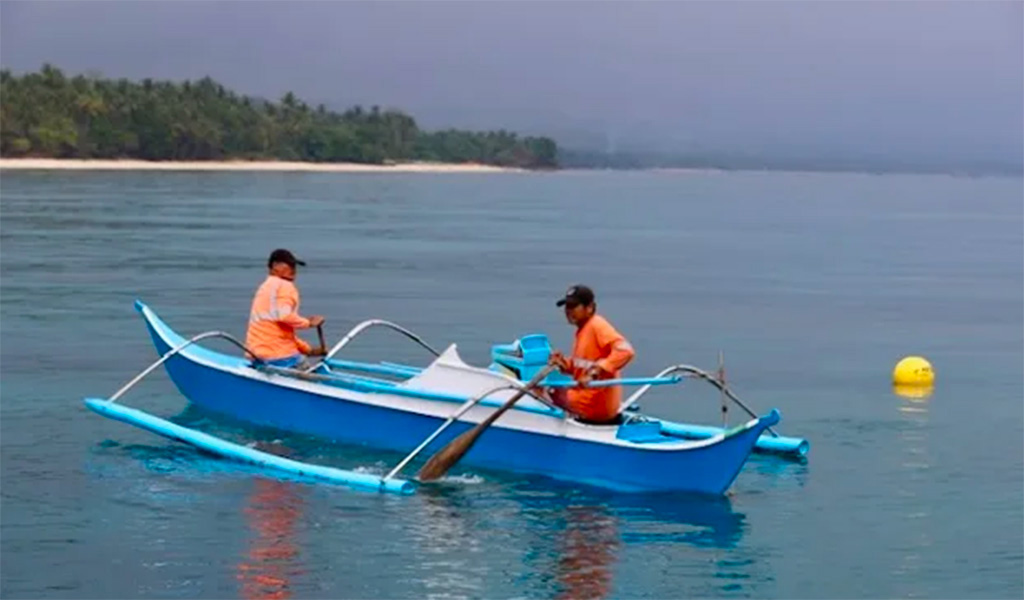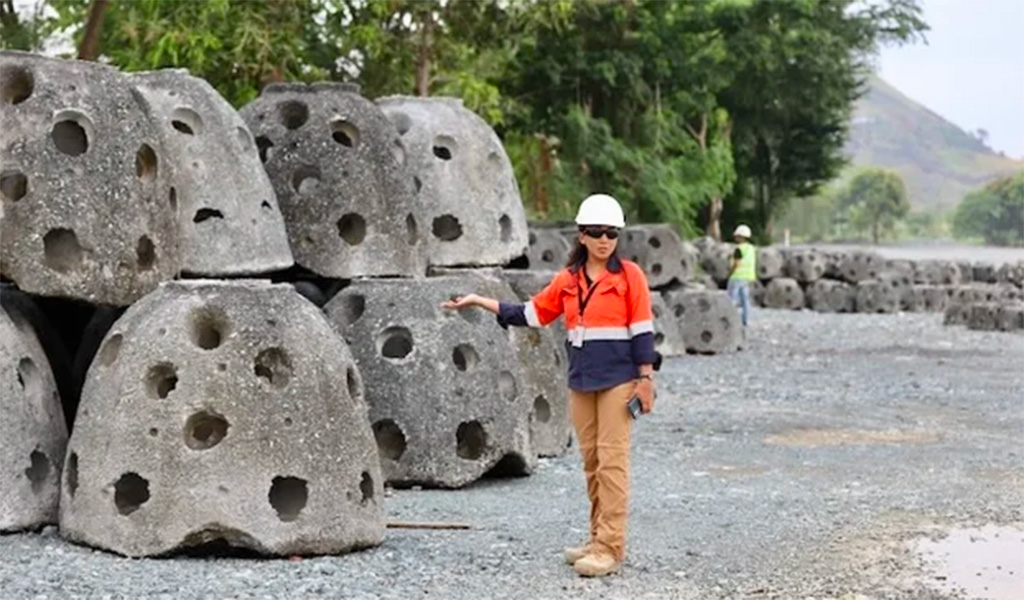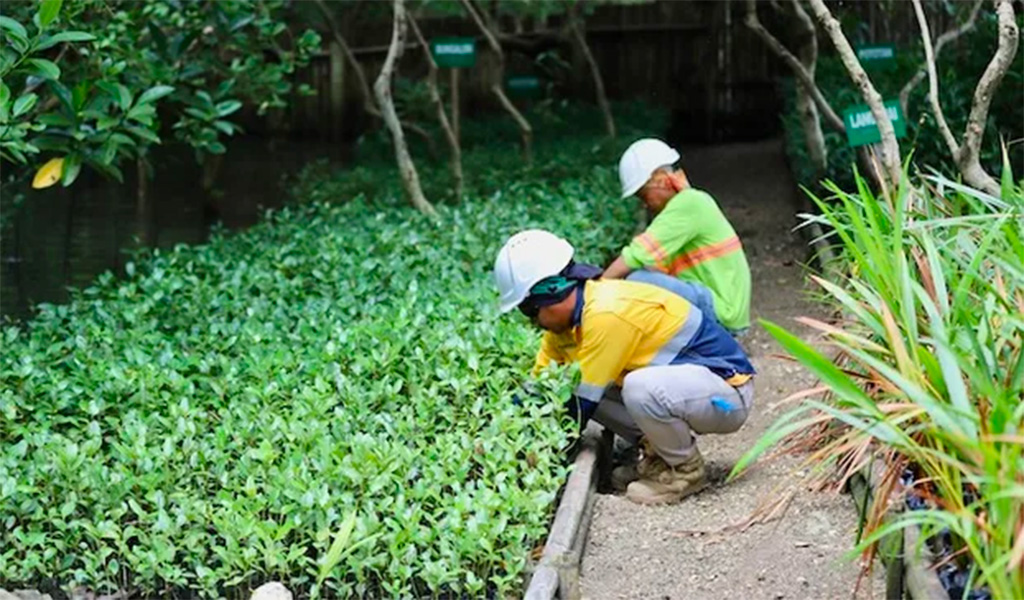A six-year fishing ban has done wonders for the 129-hectare Colorada Point Marine Protected Area in Aroroy town in the province of Masbate, Philippines, as corals are thriving and the fish are back with sea turtles, lobsters, giant clams and other creatures
By Rhaydz B. Barcia

MASBATE, Philippines – Joecil Regala was only 12 years old when he started to work as a fisherman in Aroroy, Masbate province.
Joecil, now 56 years old, and his brothers Rogelio, 43, and Darwin, 40, practiced illegal dynamite fishing from 1980 to 2016.
All three are residents of Sitio Colorado Barangay Tigbao in Aroroy, the first-class municipality known for its gold mines.
“We did dynamite fishing from the 1980s to 2016 to support our families,” Rogelio said.
“We detonated in coral beds, which are habitats of fish,” he said in Bicolano, the language spoken in the island province at the crossroads of Luzon and the Visayas islands.
Every dynamite explosion damage, on average, two square meters of corals. “Everybody did it, so almost all the corals were destroyed.” Rogelio knows first-hand the danger of explosives.
His disfigured left hand is the result of an accidental explosion while he was assembling piston also known as improvised dynamite.
The brothers still take to the sea. But they now take on the role of wardens and protectors of municipal waters.
Regeneration
In 2017, the Aroroy local government and Filminera Resources Corporation started hiring local fishers to become sea wardens, more commonly called bantay dagat.
“As bantay dagat, we don’t allow any fishermen to enter and catch fish within the declared marine protected area,” Joecil said.

Six years without fishing, he said, has done wonders. “The fish are back. The corals are also reviving. The MPA is now home to different marine species,” Joecil shared.
Sea turtles, lobsters, giant clams, and other sea creatures have been thriving in the marine protected area (MPA) of Colorada Point in Barangay Tigbao here.
For Joecil, with four children, and Rogelio and Darwin, with two each, safeguarding the seas could hand down a legacy of bounty to their offspring.
There are six wardens of the sea from Tigbao village. They used to be seven but the oldest opted to retire. They watch over 129 hectares of marine protected area. Their brief is to bring back the fish and revive the corals. They patrol the sea six times a day, for a daily wage of P365 (USD 6,5), said Darwin.
It is, by the standards of Masbate, a viable alternative livelihood.
Reef balls
Within the MPA are 3,993 reef balls planted with 52,000 coral fragments. The project was spearheaded by another mining concern, the Philippine Gold Processing & Refining Corporation (PGPRC).
The MPA site of the reef balls is a corridor for boats headed to various villages and localities. The bantay dagat take turns so there are patrols 24/7.
Lovelle Cariaga, Filminera environmental manager and Masbate resident, said the corporation and its sister company, PGPRC, work with the local government to ensure the best technology for the rehabilitation of reefs.
Reef balls are made of special, marine-friendly concrete, used worldwide to create habitats for fish and other marine species.

These are made in different sizes to best match the natural reef type of Colorada Point in Tigbao village, said Cariaga.
The locals have worked since 2017 with the US-based non-profit Reef Ball Foundation, which helps in the production of reef balls.
Cariaga said they will deploy over 400 reef balls in the MPA in May to regenerate more coral fragments.
“Reef restoration is critical for the marine ecosystem’s long-term sustainability, and in helping mitigate the impact of climate change, aside from providing livelihood to local fishermen,” Cariaga said.
Troubled past
It sounds a bit ironic – gold mine operators helping underwrite a marine environmental program in Masbate.
PSA regional director Cynthia Perdiz told Rappler that the cutting of mangroves and dying coral reefs are major contributory factors for the declining fishing industry in Bicol Region. Toxic waste from land can kill coral reefs.
Perdiz cited the 2005 toxic spillage from the Rapu-Rapu mine, still the worst mining disaster in the country after the passage of the Philippine Mining Act of 1995.
Rapu-Rapu’s owner, Lafayette was the first mining company allowed by the Philippine government to operate following the law’s enactment. Back then, it was touted as a model of responsible and sustainable mining.
But Lafayette released cyanide that poisoned the earth and the sea. It caused massive fish kills that affected the livelihood of coastal communities in Albay and Sorsogon.

In the past, Filminera faced several complaints over alleged environmental destruction affecting the municipalities of Aroroy and Baleno.
The Court of Appeals in 2017 dismissed a petition by environmental group Ang Aroroy Ay Alagaan, Incorporated that sought a writ of kalikasan (in the Philippines, legal protection to the constitutional right to live in a healthy environment), and an environmental protection order against Filminera Resources Corporation’s gold mine in Aroroy. However, the Supreme Court upheld the Court’s ruling the following year.
Former Environment Secretary Gina Lopez did not include Filminera in the order for closure or suspension that listed 28 mining sites across the country. Filminera operates on 13,000 hectares. It’s the largest gold mine operator in the Philippines.
Another company involved in marine environmental programs is Phil Gold, a major driver in getting Colorada Point declared a marine protected area. It has expanded the mangrove planting program to provide additional livelihood to the coastal community of Port Barrera.
This story was originally published on the Philippine media Rappler, and is republished within the Human Journalism Network program, supported by the ICFJ, International Center for Journalists.
